Allison Minor was a Visiting Fellow with the Center for Sustainable Development at Brookings from September 2023 through September 2024. In this interview, she reflects on the gap between international development and U.S. foreign policy communities in addressing conflict and fragility. She unpacks her recent studies at Brookings and maps out the steps to overcome entrenched assumptions, systematic failures, and bureaucratic tendencies in high-stakes, rapidly shifting environments like Yemen. Minor delineates the need for a more agile and practical approach to conflict prevention while underscoring the importance of “just-in-time” prevention alongside long-term structural prevention.
I believe, first and foremost, that we need to be much more precise and modest when we talk about the United States’ ability to prevent conflict in other countries. When we exaggerate the influence of foreign actors like the U.S., we often underestimate the importance and agency of local actors.
Allison Minor
Junjie Ren: You’ve worked across multiple U.S. government agencies and international organizations. What were some key experiences that motivated you and shaped your approach to conflict prevention?
Allison Minor: I joined the U.S. Agency for International Development (USAID) in January 2015 and was assigned to work on Yemen. It just so happened that this was right as the conflict in the country was breaking out, and I had a front-row seat to witness how the U.S. bureaucracy was adapting to that emerging conflict, both operationally and strategically. It pushed me to think more rigorously about what a better approach might look like, both specifically in the Yemen case and more broadly.
Since then, I’ve worked on Yemen from different parts of the U.S. government on and off for the past decade. It has been difficult to watch how, over time, resolving the conflict became harder and more costly. And, of course, this kind of dynamic is not limited to Yemen—I believe we’re seeing a similar dynamic unfolding in Sudan now. My interest in conflict prevention stems very much from this personal experience and a genuine desire to find more effective approaches.
The existing conflict prevention literature contains rich discussions of the best technical approaches to conflict prevention globally, but I felt there was not sufficient discussion of the practical constraints to implementing those approaches in large bureaucracies like the U.S. government.
Another motivation was the growing gulf I sensed between the international development community and the U.S. foreign policy community around conflict and fragility. Within the international development community, there’s a broad recognition of the importance of addressing conflict and fragility. The world’s poor increasingly live in fragile states, and violent conflict now poses one of the greatest threats to achieving the Sustainable Development Goals. Meanwhile, in the U.S. foreign policy community, we’re seeing a pivot away from focusing on fragile states like Iraq and Afghanistan in favor of addressing major power competition and global challenges like climate change. I worry that this will create a divide between the development and U.S. foreign policy communities, which will make it much harder to promote effective conflict prevention.
Junjie Ren: You’ve described conflict prevention as an ambiguous term. How do you approach the concept of conflict prevention in the context of global governance?
Allison Minor: I believe, first and foremost, that we need to be much more precise and modest when we talk about the United States’ ability to prevent conflict in other countries. When we exaggerate the influence of foreign actors like the U.S., we often underestimate the importance and agency of local actors. Of course, a major power like the U.S. can shape the trajectory of conflict in other countries, and that can be for better or for worse. But I would argue that the United States’ ability to do so is grounded in its foreign policy posture and major policy decisions made at pivotal moments, not in individual foreign policy tools like an economic assistance program.
In a Yemen case study I conducted while at Brookings, I examined the opportunities the U.S. had to prevent the Yemen war between 2011 and 2015, and it underscored this conclusion. In another paper called “Implementing Prevention,” I argue that an effective U.S. conflict prevention initiative must focus on changing U.S. policymaking processes. Specifically, these processes must be more adaptive and responsive, and officials need to prioritize conflict prevention over short-term policy imperatives.
It is particularly important that countries like the United States improve their approach to conflict prevention in the current geopolitical environment, because we are seeing increasing impediments to the U.N. mechanisms that have played an important role in conflict prevention and resolution in the past. For example, gridlock in the U.N. Security Council can impede the effectiveness of special envoys, who typically depend on the Council for their mandates.
Junjie Ren: What are the steps to overcoming these challenges?
In the U.S., doing so will require strong buy-in from senior officials and the right bureaucratic incentives. A conflict prevention initiative can secure these if it has a strong strategic rationale that aligns with U.S. national security goals and access to the right operational resources and authorities. In my paper, I provide a blueprint for what operationalizing this approach in the U.S. context might look like.
Globally, overcoming these impediments requires greater leadership from relevant international players and creative partnerships, such as the role ECOWAS previously played in resolving and mitigating conflicts in West Africa. We’ve seen this reflected in Secretary-General Guterres’s “A New Agenda for Peace,” where he calls on all countries to take on a more proactive role in promoting conflict prevention and resolution.
Junjie Ren: Let’s delve deeper into the Yemen case study. For those less familiar with the situation in Yemen, could you briefly outline what led to the conflict, particularly focusing on the rise of the Houthis?
Allison Minor: Very briefly, the war that erupted in Yemen in 2015 had its roots in Yemen’s 2011 political transition process. Like many other countries in the region at the time, Yemen experienced popular protests calling for the country’s dictatorial president, Ali Abdullah Saleh, to step down. A portion of Yemen’s military got behind those popular protests, and Saleh ultimately handed power to his vice president later that year. As part of that transition agreement, Saleh was allowed to stay in Yemen and retain his massive wealth and political power. Perhaps unsurprisingly, he soon attempted to disrupt Yemen’s peaceful transition process. What was surprising was that he worked with the Houthis, an armed group from northern Yemen with extreme religious revivalist beliefs, to do so.
The Houthis and Saleh captured the capital city of Sana’a in 2014, which ultimately led a Saudi-led coalition to declare war in March 2015 to help restore the internationally recognized government. Nearly 10 years later, the Houthis have cemented their control over northern Yemen and have grown into a more aggressive and capable military actor, allowing them to threaten the region and disrupt global maritime commerce through their attacks on ships in the Red Sea.
Junjie Ren: What were windows of opportunity for the U.S. to help prevent or significantly mitigate the Yemen war?
Allison Minor: There were three windows: in 2011, around the terms of Saleh’s resignation; in 2014, as Yemen’s transition process was collapsing; and in 2015, when the Saudis requested U.S. support for their military campaign in Yemen. It’s tough to conduct counterfactual exercises, so I tried to remain clear-eyed about the practical limitations of U.S. policy options and influence in Yemen’s complex environment. These windows were relatively brief, and the U.S. failure to seize each of them was rooted in systemic impediments to preventative action. This included a failure to weigh medium-term consequences of policy decisions over short-term imperatives, adjust U.S. assumptions in the face of changing dynamics, and mobilize the senior-level attention necessary for decisive action.
Junjie Ren: How did balancing the long-term goals of regional stability with the immediate needs of conflict prevention play out for the U.S. in the Yemen case?
Allison Minor: There were several instances where the U.S. prioritized short-term imperatives over medium-term consequences. In 2011, U.S. officials were hesitant to push for tougher conditions on Ali Abdullah Saleh or leverage U.S. influence in the form of sanctions because they wanted to minimize disruptions to U.S. counterterrorism operations, which at the time required cooperation from Saleh and his family.
In 2015, the situation was slightly different, but the trends were similar. The U.S. decided to provide unqualified support for the Saudi coalition campaign in Yemen, primarily to soothe Saudi-U.S. bilateral tensions. The long-term impact on Yemeni stability wasn’t fully considered. Another major policymaking failure was the difficulty of updating U.S. assumptions during dynamic periods. For instance, officials failed to acknowledge the growing threat posed by the Houthis or the fact that Yemen’s transition process had effectively collapsed, even as the Houthis seized control of the capital in 2014.
Junjie Ren: You’ve critiqued U.S. assumptions and biases in addressing the Yemen war. Can you elaborate on how these assumptions affected the United States’ ability to mitigate or prevent the war?
Allison Minor: I argue the failures were driven, in part, by wishful thinking bias—where we tend to ignore evidence that runs counter to our interests—but also by a status quo bias in U.S. policymaking, where officials are slow to update existing assumptions or policies. The failure to prioritize medium-term consequences and challenge or adapt U.S. assumptions are deeply rooted and natural tendencies, but I do think it’s possible to mitigate them. It requires adjustments to U.S. policymaking.
In my experience, the policymaking processes that we have in most countries were designed around the more stable portfolios that do make up the vast majority of U.S. bilateral relationships, whether it’s our European allies or even countries in the Middle East like Oman. But that kind of framework is not as useful for highly dynamic, unstable countries, the types of countries that tend to be at risk for conflict.
So, in my “Implementing Prevention” paper, I describe a few tools for helping reform these policymaking processes.
Junjie Ren: You’ve touched on the systemic failures in U.S. policy and the mechanisms to respond to these conflicts. In terms of long-termism and “just-in-time” prevention—two more technical concepts you mention in your paper—How do you balance these strategies in high-stakes and rapidly shifting environments like Yemen?
Allison Minor: This is one of the key areas where my recommendations differ from what we see in existing initiatives and other study groups related to conflict prevention. Most experts tend to focus on long-term structural conflict prevention, where you’re trying to change the drivers of conflict in a country. I agree that that is essential. But I argue that shorter-term prevention, what I call “just-in-time” prevention, is also critical.
This is more along the lines of what experts call operational prevention, where a conflict is already starting to manifest, and you’re stepping in to try to change the incentives of conflict actors to discourage further escalation.
I believe that just-in-time prevention is critical for two reasons. First, because it’s a reflection of the fact that violent conflict is already at high levels, with additional threats emerging as we speak. But also, because just-in-time prevention—in comparison to long-term prevention efforts—tends to present a clearer and stronger national security rationale that can secure the kind of policymaker buy-in that is essential for such prevention efforts to be successful. If just-in-time prevention is rooted around clearly defined objectives, it can demonstrate results in the near term that can build policymaker buy-in.
I believe differentiating between long-term and just-in-time prevention is also important because in many cases, officials approach what is essentially just-in-time prevention with long-term prevention tools. You see this with the U.S. Global Fragility Act, the most significant U.S. conflict prevention initiative in recent years, where countries like Libya and Haiti with near-term challenges are combined with countries that present more of a long-term case like Ghana or Papua New Guinea.
For effective conflict prevention, I argue we have to combine long-term prevention, just-in-time prevention, and systemic reforms to remove impediments to prevention in the bureaucracy and strengthen professional development around conflict prevention.
Junjie Ren: You’ve championed new methods for using development assistance to prevent and respond to conflict. What can be done to ensure that these investments are effectively targeted for conflict prevention, and what lessons can be gleaned for U.S. future assistance efforts?
Allison Minor: First, we need to address this growing divide between the U.S. foreign policy community and the U.S. development community as it pertains to conflict in fragile countries. If we don’t address that divide, we’re going to see foreign assistance increasingly divorced from the policy environment, which means we won’t be able to leverage foreign assistance to achieve better policy outcomes, nor use foreign assistance to inform what should be smarter U.S. policy in those places.
Another consideration for U.S. development assistance in fragile and conflict-affected countries is the importance of local leadership. There’s broad recognition within the development community about the importance of local leadership, and there are clear lessons from places like Afghanistan, where U.S. efforts were often too externally driven and this impeded transformative, sustainable change, regardless of the billions of dollars in investment.
I believe the U.S. is not capable of independently creating transformative change in another country. What we can do is promote existing locally led efforts. If those efforts do not exist or aren’t aligned with U.S. goals, the impact of U.S. development assistance will be limited. If those efforts exist only at the local level without support from the national government, it will be extremely difficult for the U.S. to promote change at the national level.
So, if we’re going to recognize the importance of local leadership, then we have to confront what this means about where the U.S. operates and what U.S. objectives in those places are.
Junjie Ren: And how do you think the next generation of scholars and policymakers can most effectively contribute to conflict prevention, perhaps following your path, and help align foreign assistance efforts, particularly in fragile states?
Allison Minor: I hope that future scholars won’t be afraid to work across sectors. My background is in international development, but over the past several years, I’ve also focused heavily on U.S. foreign policy. And as I’ve discussed, I worry that too large a divide exists between those two fields, and that both fields are weaker because of it. Even though foreign policy and foreign assistance are deeply interconnected, in my experience, the experts in each field are often speaking past each other. They’re using jargon, establishing separate cultures, failing to grasp others’ perspectives, and creating echo chambers. And the deeper one gets established in a field, the harder it can be to see those silos.
My encouragement to future scholars would be to take an unconventional approach, work across sectors, help bridge those divides, and challenge those silos.
The Brookings Institution is committed to quality, independence, and impact.
We are supported by a diverse array of funders. In line with our values and policies, each Brookings publication represents the sole views of its author(s).
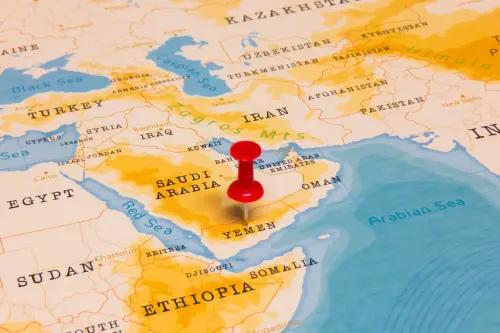

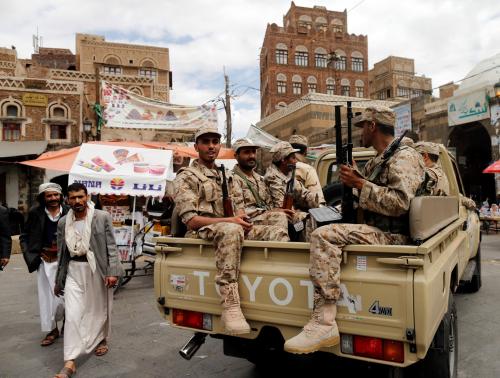
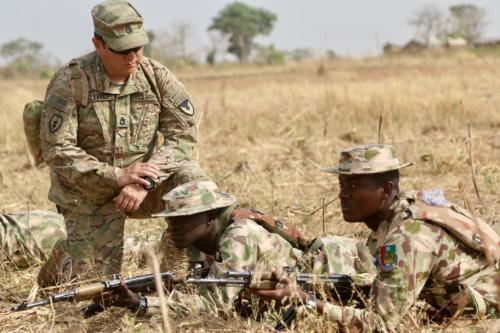
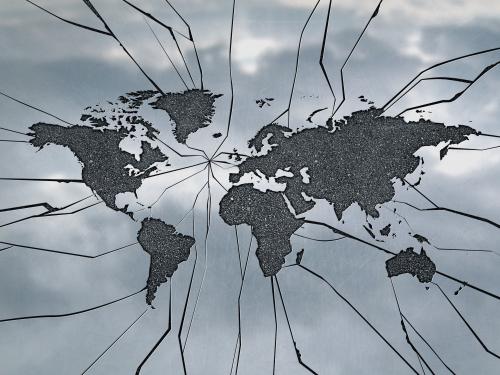



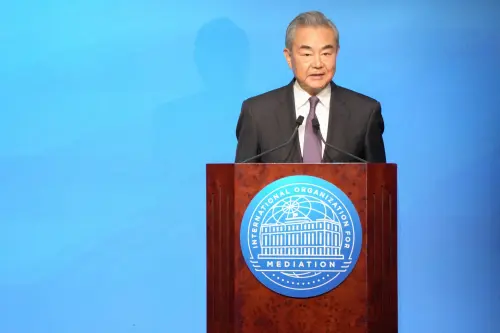
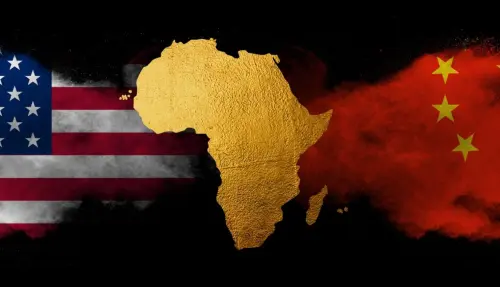

Commentary
Bridging the gaps: Allison Minor on US foreign policy, conflict prevention, and fragility
October 18, 2024